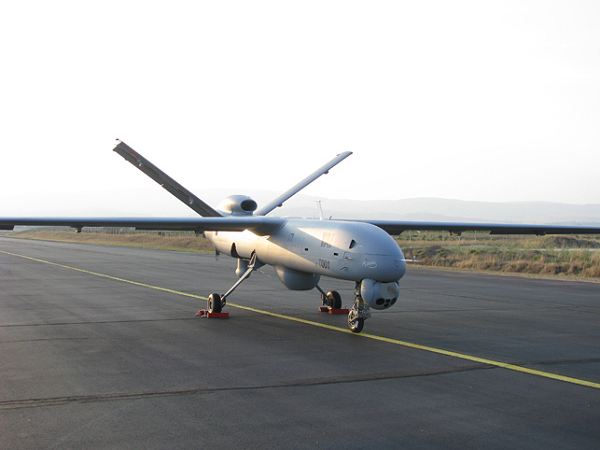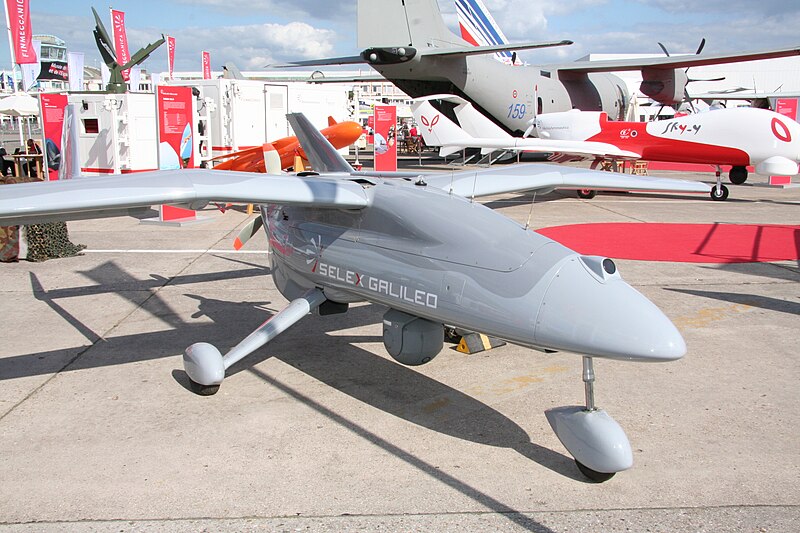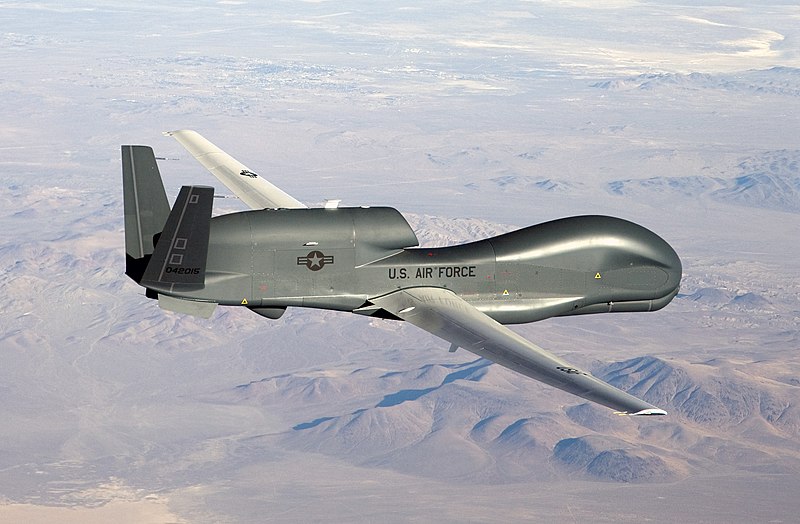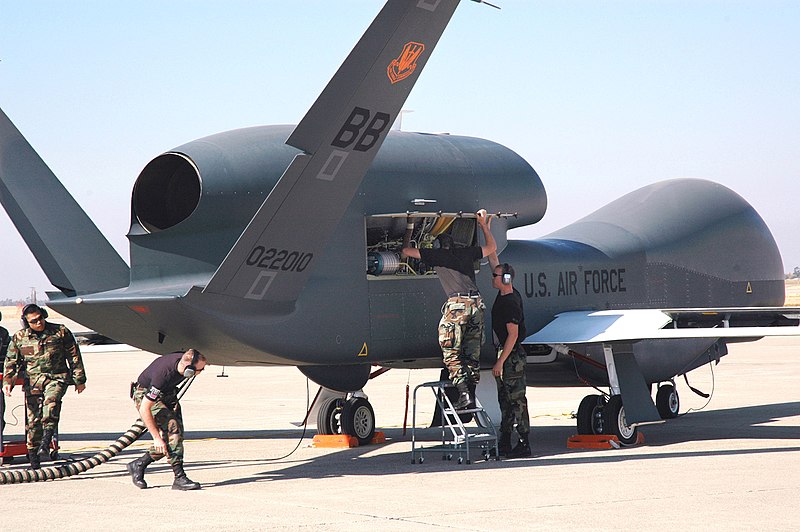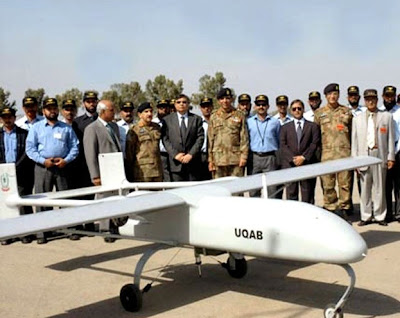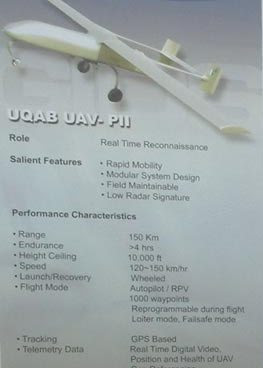General Atomics MQ-9 Reaper
The General Atomics MQ-9 Reaper (also called Predator B or Guardian)[3] is an unmanned aerial vehicle (UAV), capable of remote controlled or autonomous flight operations, developed by General Atomics Aeronautical Systems (GA-ASI) for use by the United States Air Force, the United States Navy, the CIA, U.S. Customs and Border Protection, the Royal Air Force, and the Italian Air Force. The MQ-9 and other UAVs are referred to as Remotely Piloted Vehicles/Aircraft (RPV/RPA) by the U.S. Air Force to indicate their human ground controllers.[4][5] The MQ-9 is the first hunter-killer UAV designed for long-endurance, high-altitude surveillance.[6]
The MQ-9 is a larger, heavier, and more capable aircraft than the earlier MQ-1 Predator (other than loiter time[citation needed]); it can be controlled by the same ground systems used to control MQ-1s. The Reaper has a 950-shaft-horsepower (712 kW) turboprop engine, far more powerful than the Predator's 115 hp (86 kW) piston engine. The power increase allows the Reaper to carry 15 times more ordnance payload and cruise at almost three times the speed of the MQ-1.[6] Although the MQ-9 can fly pre-programmed routes autonomously, the aircraft is monitored or controlled by aircrew in the Ground Control Station (GCS) and weapons employment is commanded by the flight crew.[citation needed]
In 2008, the New York Air National Guard 174th Fighter Wing began the transition from F-16 piloted fighters to MQ-9 Reapers, becoming the first fighter squadron conversion to an all-unmanned combat air vehicle (UCAV) attack squadron.[7][8][9] As of March 2011, the U.S. Air Force was training more pilots for advanced unmanned aerial vehicles than for any other single weapons system.[10]
Then U.S. Air Force (USAF) Chief of Staff General T. Michael Moseley said, "We've moved from using UAVs primarily in intelligence, surveillance, and reconnaissance roles before Operation Iraqi Freedom, to a true hunter-killer role with the Reaper."
Specifications :
General characteristics
Crew: 0 onboard, 2 in ground sation
Length: 36 ft 1 in (11 m)
Wingspan: 65 ft 7 in (20 m)
Height: 11 ft 10 in (3.6 m)
Empty weight: 4,901 lb (2,223 kg)
Max takeoff weight: 10,494 lb (4,760 kg)
Fuel capacity: 4,000 lb (1,800 kg)
Payload: 3,800 lb (1,700 kg)
Internal: 800 lb (360 kg)
External: 3,000 lb (1,400 kg)
Powerplant: 1 × Honeywell TPE331-10 turboprop, 900 hp (671 kW) with Digital Electronic Engine Control (DEEC)[72]
Performance
Maximum speed: 555 mph; 893 km/h (482 kn)
Cruise speed: 360 mph; 580 km/h (313 kn) [73]
Range: 999 nmi; 1,150 mi (1,850 km)
Endurance: 14 hours fully loaded[74]
Service ceiling: 50,000 ft (15,000 m)
Operational altitude: 25,000 ft (7.5 km)[75]
Armament
7 hardpoints
Up to 1,500 lb (680 kg) on the two inboard weapons stations[76]
Up to 750 lb (340 kg) on the two middle stations[76]
Up to 150 lb (68 kg) on the outboard stations[76]
Center station not used
Up to 14 AGM-114 Hellfire air to ground missiles can be carried or four Hellfire missiles and two 500 lb (230 kg) GBU-12 Paveway II laser-guided bombs. The 500 lb (230 kg) GBU-38 Joint Direct Attack Munition (JDAM) can also be carried. Testing is underway to support the operation of the AIM-92 Stinger air-to-air missile.
Avionics
AN/APY-8 Lynx II radar[77]
Raytheon SeaVue Marine Search Radar, on the Guardian variants[3]
AN/DAS-1 MTS-B Multi-Spectral Targeting System[78]
More : General_Atomics_MQ-9_Reaper


